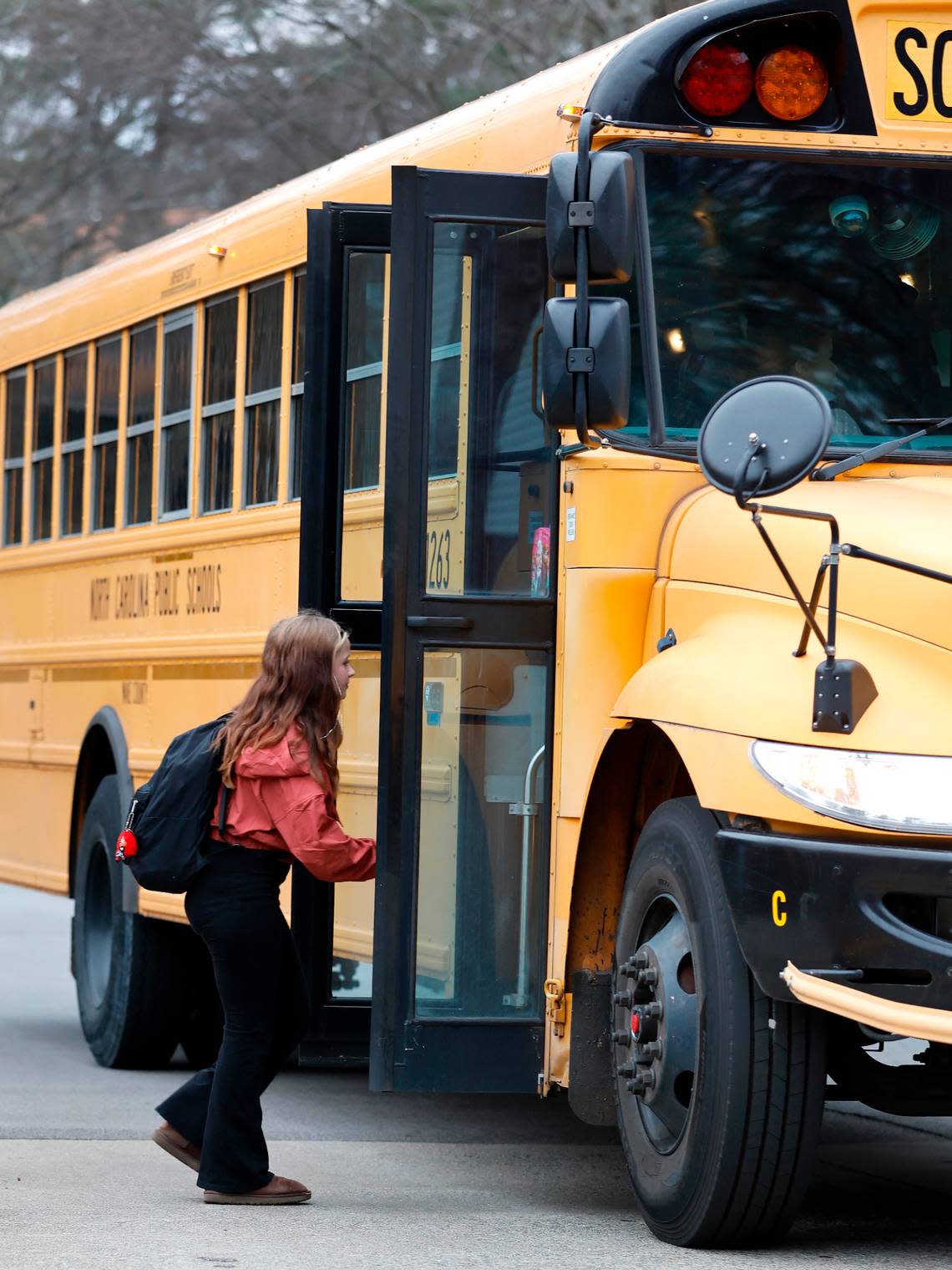‘Frustration is evident.’ How Wake’s 32% bus driver vacancy rate is hurting students
Wake County’s school bus driver vacancy has risen to 32% — frustrating families and school employees with daily problems with bus service.
Figures presented on Tuesday show that Wake County’s bus driver vacancy rate of 32.1% is 10.9% higher than a year ago. The 285 vacancies have caused the remaining drivers to run more routes and left some runs uncovered, forcing families to provide their own transportation.
“Levels of service are impacted,” Superintendent Catty Moore said at Tuesday’s school board work session. “Frustration is evident. It’s real. Those levels of service and that frustration are going to continue until we make a substantial difference in what’s happening with the vacancy rate.”
But school leaders acknowledged solutions aren’t clear as a shortage of drivers persists statewide and nationally. Moore said the bus problems will continue through the school year.
Widespread driver shortage
At the start of the school year, North Carolina superintendents estimated their districts had 1,342 bus driver vacancies. That’s out of around 14,000 school buses that run each day.
The lack of drivers has caused school districts to make changes, such as adjusting bus routes and reducing the number of bus stops. It’s also led to a daily situation across the state where families have to provide their own transportation when no bus driver is available.

“We are not covering as well as we want to, as we could, as we should,” said Mark Strickland, Wake’s chief of facilities and operations, which oversees transportation. “But I do believe we are being as efficient as we could be with the resources that we have.”
But Strickland also told school board members that these “double and triple and quadruple runs” mean Wake is “not getting students to school in a timely manner.”
Some districts have turned to higher pay.
In North Carolina, the state pays the $15 per base salary for school bus drivers. Some school districts have offered bonuses and used local funds to boost pay for drivers.
Chapel Hill-Carrboro recently raised the starting salaries for school bus drivers to $20 an hour. That compares to $17.20 an hour in Wake County.
Shortages could affect school bell schedules
The driver shortage could affect whether Wake County changes school bell schedules to start high schools later, giving teens more sleep.
Administrators are not recommending changing any start times for the 2023-24 school year. The board is scheduled to adopt the 2023-24 school bell schedules on March 21.
Currently, most bell schedules run from 7:25 a.m. to 2:18 p.m. at high schools; 8:15 a.m. to 3 p.m. at middle schools; and 9:15 a.m. to 3:45 p.m. at elementary schools. It’s part of a three-tier system in which the same bus makes multiple runs in the morning and afternoon to reduce the number of buses that are needed.
But Wake’s schedule goes against more than a decade of national research that says early start times don’t help teens. For instance, the American Academy of Pediatrics recommends that middle and high schools begin at 8:30 a.m. or later to better align with the circadian rhythms of adolescents.
In September, school administrators said they wanted to survey the community about potentially changing start times for the 2024-25 school year to make them later for high schools. District leaders said they needed community feedback before making a major change because it would impact things such as childcare, athletics and after-school jobs for teens.
Drew Cook, assistant superintendent for academics, said Tuesday that they plan to present the community feedback at the school board’s April student achievement committee meeting.
